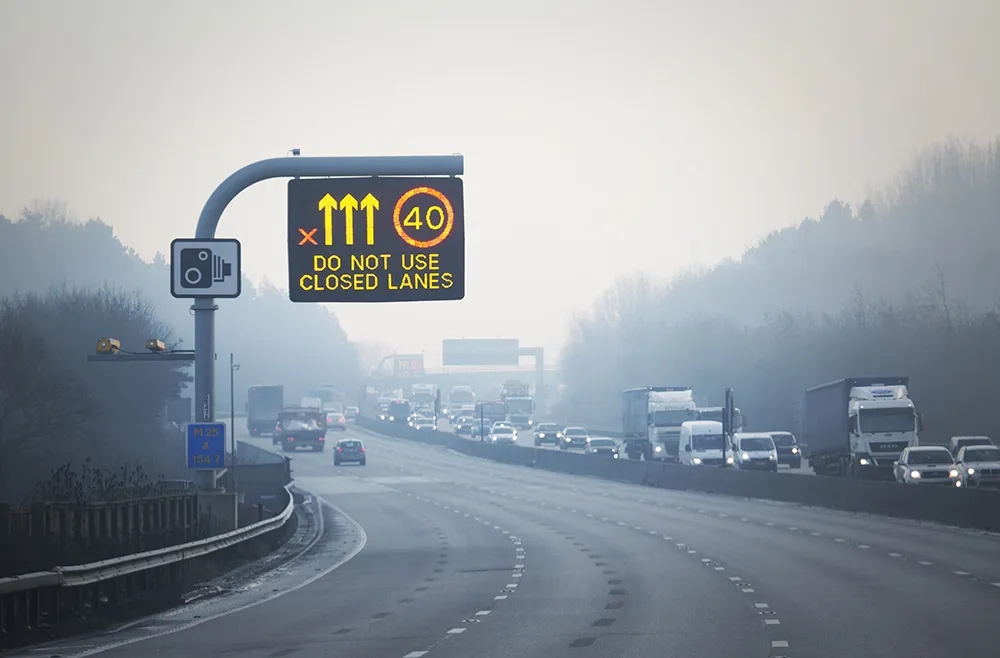Six in ten UK drivers own up to risky tailgating (57 per cent) and a similar proportion break the limit by 10mph or more (60 per cent) on motorways and 70mph dual carriageways, with men by far the worst offenders, a survey by Brake and insurance company Direct Line reveals.
Almost all drivers say they worry about other drivers tailgating on motorways: 95 per cent are at least occasionally concerned about vehicles too close behind them; more than four in ten (44 per cent) are concerned every, or most, tim
May 22, 2014
Read time: 4 mins
Six in ten UK drivers own up to risky tailgating (57 per cent) and a similar proportion break the limit by 10mph or more (60 per cent) on motorways and 70mph dual carriageways, with men by far the worst offenders, a survey by 4235 Brake and insurance company 4236 Direct Line reveals.
Almost all drivers say they worry about other drivers tailgating on motorways: 95 per cent are at least occasionally concerned about vehicles too close behind them; more than four in ten (44 per cent) are concerned every, or most, times they drive on a motorway.
By driving too close to the vehicle in front and breaking the speed limit, drivers are leaving themselves far too little time to react in an emergency, risking devastating crashes. Crashes on 70mph roads are more than twice as likely to result in death as crashes on roads with lower speed limits. In 2012 (most recent data available) there were 88 deaths and 654 serious injuries on UK motorways.
The survey reveals that in the past year: Almost six in ten (57 per cent) admit leaving less than a two-second gap between themselves and the vehicle in front, with almost three in ten (28 per cent) doing so monthly or more. More men (61 per cent) admit doing so than women (53 per cent); Six in ten (60 per cent) admit breaking the 70mph speed limit by 10mph or more, with almost three in ten (28 per cent) doing so monthly or more. Men are the worst offenders, with almost seven in ten (69 per cent) doing 80mph or more, and more than a third (36 per cent) doing so at least monthly, compared with just over half (53 per cent) and two in ten (22 per cent) women, respectively.
Responding to the report, Simon Sheldon-Wilson, Traffic Management director for the503 Highways Agency, says: “Safety is our top priority and we are committed to continuing to reduce the number of people killed and seriously injured on our roads. Congestion on our roads is estimated to cost the economy £3 billion each year, and a quarter of this is caused by the 430,000 incidents we deal with annually. 14 per cent of casualties on our roads are caused by people tailgating. That’s why we’re reminding people to stay safe and keep at least a two-second gap from the car in front.”
Brake recently supported Highway Agency proposals to roll out speed cameras on stretches of ‘smart' motorways, and urges the government to extend the used of average speed cameras across the network.
Julie Townsend, deputy chief executive, Brake, said: "Almost all drivers are concerned about the danger posed by other people tailgating on motorways, and yet a shockingly high proportion admits driving too close and speeding themselves. There are no two ways about it: ignore the two-second rule or the speed limit on motorways and you're putting yourself and others at risk of a horrific crash. Traffic laws are not just for other people: all drivers can help make our motorways safer and prevent needless tragedies by committing to keep your distance and stay under speed limits, including temporary lower limits."
Rob Miles, director of motor trading at Direct Line, commented: "Driving too closely to the car in front of you is asking for trouble. Drive too closely at speed and motorists risk not only their own life but other road users' lives too. Whilst the UK's motorways have proportionately less crashes than other roads, speed is still the biggest killer of road users. We believe it is better to save lives than to save a few minutes of journey time".
Driver and Vehicle Standards Agency (DVSA) Chief Driving Examiner, Lesley Young said: “Keeping a big enough stopping distance is crucial to staying safe, particularly in fast moving traffic when you have less time to react. Always allow at least two seconds from the vehicle in front and at least double this in bad conditions. Not doing so could have tragic consequences. If in doubt, remember the saying, ‘only a fool breaks the two-second rule’.”
Brake, the Highways Agency and DVSA all offer advice and information to drivers on driving safely in different conditions and drivers are reminded that it is their responsibility to drive according to the conditions at all times.
Motorways in England have fewer fatalities than comparable roads in Europe, despite carrying more heavy traffic overall. But they are vulnerable to disruption when vehicles break down, crash, or lose their loads.
%$Linker:2 External <?xml version="1.0" encoding="utf-16"?><dictionary /> 0 0 0 oLinkExternal This video, presented by Sophie Raworth https://www.youtube.com/watch?v=uwzb5ke0wgU&list=PL45A967D515B16510 false https://www.youtube.com/watch?v=uwzb5ke0wgU&list=PL45A967D515B16510 false false %>, explains more about the dangers of tailgating.
Almost all drivers say they worry about other drivers tailgating on motorways: 95 per cent are at least occasionally concerned about vehicles too close behind them; more than four in ten (44 per cent) are concerned every, or most, times they drive on a motorway.
By driving too close to the vehicle in front and breaking the speed limit, drivers are leaving themselves far too little time to react in an emergency, risking devastating crashes. Crashes on 70mph roads are more than twice as likely to result in death as crashes on roads with lower speed limits. In 2012 (most recent data available) there were 88 deaths and 654 serious injuries on UK motorways.
The survey reveals that in the past year: Almost six in ten (57 per cent) admit leaving less than a two-second gap between themselves and the vehicle in front, with almost three in ten (28 per cent) doing so monthly or more. More men (61 per cent) admit doing so than women (53 per cent); Six in ten (60 per cent) admit breaking the 70mph speed limit by 10mph or more, with almost three in ten (28 per cent) doing so monthly or more. Men are the worst offenders, with almost seven in ten (69 per cent) doing 80mph or more, and more than a third (36 per cent) doing so at least monthly, compared with just over half (53 per cent) and two in ten (22 per cent) women, respectively.
Responding to the report, Simon Sheldon-Wilson, Traffic Management director for the
Brake recently supported Highway Agency proposals to roll out speed cameras on stretches of ‘smart' motorways, and urges the government to extend the used of average speed cameras across the network.
Julie Townsend, deputy chief executive, Brake, said: "Almost all drivers are concerned about the danger posed by other people tailgating on motorways, and yet a shockingly high proportion admits driving too close and speeding themselves. There are no two ways about it: ignore the two-second rule or the speed limit on motorways and you're putting yourself and others at risk of a horrific crash. Traffic laws are not just for other people: all drivers can help make our motorways safer and prevent needless tragedies by committing to keep your distance and stay under speed limits, including temporary lower limits."
Rob Miles, director of motor trading at Direct Line, commented: "Driving too closely to the car in front of you is asking for trouble. Drive too closely at speed and motorists risk not only their own life but other road users' lives too. Whilst the UK's motorways have proportionately less crashes than other roads, speed is still the biggest killer of road users. We believe it is better to save lives than to save a few minutes of journey time".
Driver and Vehicle Standards Agency (DVSA) Chief Driving Examiner, Lesley Young said: “Keeping a big enough stopping distance is crucial to staying safe, particularly in fast moving traffic when you have less time to react. Always allow at least two seconds from the vehicle in front and at least double this in bad conditions. Not doing so could have tragic consequences. If in doubt, remember the saying, ‘only a fool breaks the two-second rule’.”
Brake, the Highways Agency and DVSA all offer advice and information to drivers on driving safely in different conditions and drivers are reminded that it is their responsibility to drive according to the conditions at all times.
Motorways in England have fewer fatalities than comparable roads in Europe, despite carrying more heavy traffic overall. But they are vulnerable to disruption when vehicles break down, crash, or lose their loads.
%$Linker:









